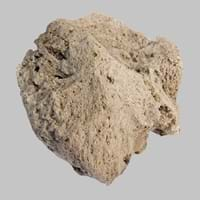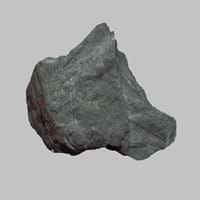Definition
Pumice is a volcanic rock that consists of highly vesicular rough textured volcanic glass, which may or may not contain crystals
Taconite is a low-grade iron ore which belongs to sedimentary rock and containing about 27% iron and 51% silica
Origin
Spain
Western Australia, Minnesota
Discoverer
Unknown
Newton Horace Winchell
Etymology
From Old French pomis, from a Latin dialect variant of pumex
From the name of Taconic Mountains in New England
Class
Igneous Rocks
Sedimentary Rocks
Sub-Class
Durable Rock, Medium Hardness Rock
Durable Rock, Medium Hardness Rock
Group
Volcanic
Not Applicable
Other Categories
Fine Grained Rock, Opaque Rock
Coarse Grained Rock, Opaque Rock
Texture
Vesicular
Banded, Trellis
Color
Beige, Colourless, Grey, Light Green, Light Grey, Pink, White, Yellow- grey
Red, Reddish Brown
Durability
Durable
Durable
Scratch Resistant
Yes
Yes
Appearance
Vesicular
Layered, Banded, Veined and Shiny
Interior Uses
Decorative Aggregates, Flooring, Homes, Interior Decoration
Decorative Aggregates, Entryways, Flooring, Homes, Interior Decoration
Exterior Uses
As Building Stone, As Facing Stone, Garden Decoration, Paving Stone
As Building Stone, Garden Decoration, Paving Stone
Other Architectural Uses
Curbing, Powder
Curbing
Construction Industry
As Dimension Stone, Cement Manufacture, for Road Aggregate, In landscaping and horticulture, Making natural cement, Production of lightweight concrete blocks
As Dimension Stone, Used for flooring, stair treads, borders and window sills.
Medical Industry
As an abrasive in skin exfoliating products, In Chemical and Pharmaceutical Industry, Medicines and Cosmetics
Not Yet Used
Antiquity Uses
Artifacts
Artifacts
Commercial Uses
As a traction material on snow-covered roads, As an abrasive in pencil erasers, Fine abrasive used for polishing, Manufacture of Soap, Solvents, Dyes, Plastics and Fibres, Used in aquariums
As a touchstone, Cemetery Markers, Creating Artwork
Types
Scoria
Not Available
Features
Host Rock for Lead
Is one of the oldest rock
Archaeological Significance
Monuments
Not Yet Used
Used
Famous Monuments
Not Applicable
Data Not Available
Sculpture
Not Yet Used
Used
Famous Sculptures
Not Applicable
Data Not Available
Pictographs
Used
Not Used
Petroglyphs
Used
Not Used
Figurines
Not Yet Used
Used
Formation
Pumice rock forms when the magma cools so quickly that atoms in the melt are not able to arrange themselves into a crystalline structure.
Taconite is a type of sedimentary rock formed when a river carries or transports pieces of broken rock as it flows. When the river reaches a lake or sea, its load of transported rocks settles or deposits at the bottom of sea or lake.
Mineral Content
Aluminum Oxides, Calcite, Carbonate, Iron Oxides, Silica
Hematite, Magnetite, Quartz
Compound Content
Al, Aluminium Oxide, CaO, Carbon Dioxide, MgO, Silicon Dioxide
Fe, Iron(III) Oxide, Silicon Dioxide
Types of Metamorphism
Burial Metamorphism, Impact Metamorphism
Not Applicable
Types of Weathering
Biological Weathering, Chemical Weathering, Mechanical Weathering
Biological Weathering, Mechanical Weathering
Types of Erosion
Chemical Erosion, Coastal Erosion, Glacier Erosion, Sea Erosion, Water Erosion, Wind Erosion
Chemical Erosion, Coastal Erosion, Glacier Erosion, Water Erosion, Wind Erosion
Grain Size
Fine Grained
Large and Coarse Grained
Fracture
Planar
Uneven, Splintery or Conchoidal
Streak
White, Greenish White or Grey
White
Porosity
Highly Porous
Highly Porous
Compressive Strength
Not Available
Cleavage
Perfect
Imperfect
Specific Gravity
2.86
5-5.3
Transparency
Opaque
Translucent to Opaque
Density
0.25-0.3 g/cm3
Not Available
Resistance
Impact Resistant, Pressure Resistant
Heat Resistant, Impact Resistant, Pressure Resistant, Wear Resistant
Deposits in Eastern Continents
Asia
Afghanistan, Indonesia, Japan, Russia
China, India, Iran, Iraq, Oman, Russia, Saudi Arabia, Taiwan, Thailand, Vietnam
Africa
Ethiopia, Kenya, Tanzania
Kenya, Morocco, South Africa, Tanzania
Europe
Greece, Hungary, Iceland, Italy, Turkey
Austria, France, Greece, Italy, Malta, Poland, Portugal, Serbia, Spain, Sweden, United Kingdom
Others
Not Yet Found
Greenland, Mid-Atlantic Ridge
Deposits in Western Continents
North America
Bahamas, Barbados, Canada, Costa Rica, Cuba, Jamaica, Mexico, USA
Canada, Mexico, USA
South America
Argentina, Chile, Ecuador, Peru
Bolivia, Brazil
Deposits in Oceania Continent
Australia
New Zealand, Western Australia
New South Wales, Queensland, South Australia, Western Australia
Pumice vs Taconite Characteristics
Though some rocks look identical, they have certain characteristics which distinguish them from others. Characteristics of rocks include texture, appearance, color, fracture, streak, hardness etc. Pumice vs Taconite characteristics assist us to distinguish and recognize rocks. Also you can check about Properties of Pumice and Properties of Taconite. Learn more about Pumice vs Taconite in the next section. The interior uses of Pumice include Decorative aggregates, Flooring, Homes and Interior decoration whereas the interior uses of Taconite include Decorative aggregates, Entryways, Flooring, Homes and Interior decoration. Due to some exceptional properties of Pumice and Taconite, they have various applications in construction industry. The uses of Pumice in construction industry include As dimension stone, Cement manufacture, For road aggregate, In landscaping and horticulture, Making natural cement, Production of lightweight concrete blocks and that of Taconite include As dimension stone, Used for flooring, stair treads, borders and window sills..
More about Pumice and Taconite
Here you can know more about Pumice and Taconite. The life cycle of a rock consists of formation of rock, composition of rock and transformation of rock. The composition of Pumice and Taconite consists of mineral content and compound content. The mineral content of Pumice includes Aluminum Oxides, Calcite, Carbonate, Iron Oxides, Silica and mineral content of Taconite includes Hematite, Magnetite, Quartz. You can also check out the list of all Igneous Rocks. When we have to compare Pumice vs Taconite, the texture, color and appearance plays an important role in determining the type of rock. Pumice is available in beige, colourless, grey, light green, light grey, pink, white, yellow- grey colors whereas, Taconite is available in red, reddish brown colors. Appearance of Pumice is Vesicular and that of Taconite is Layered, Banded, Veined and Shiny. Properties of rock is another aspect for Pumice vs Taconite. The hardness of Pumice is 6 and that of Taconite is 5.5-6. The types of Pumice are Scoria whereas types of Taconite are Not Available. Streak of rock is the color of powder produced when it is dragged across an unweathered surface. The streak of Pumice and Taconite is white, greenish white or grey. The specific heat capacity of Pumice is 0.87 kJ/Kg K and that of Taconite is 3.20 kJ/Kg K. Depending on the properties like hardness, toughness, specific heat capacity, porosity etc., rocks are resistant to heat, wear, impact, etc.Pumice is impact resistant, pressure resistant whereas Taconite is heat resistant, impact resistant, pressure resistant, wear resistant.





